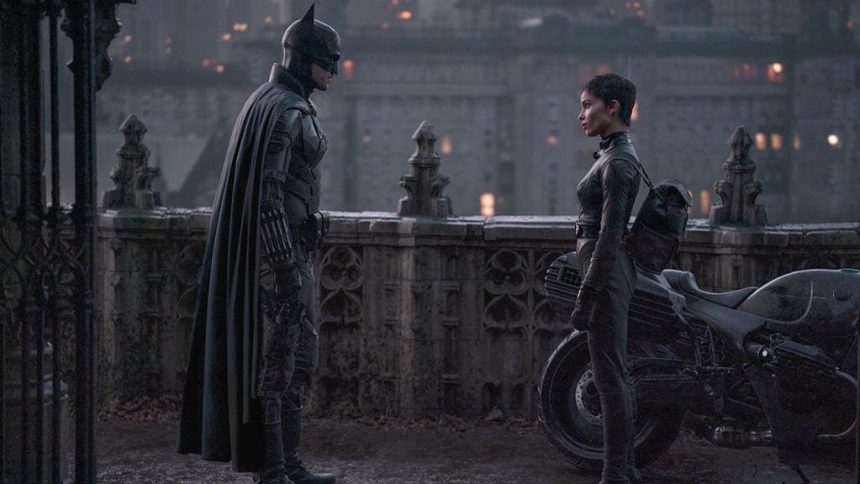The current state of Batman in cinema is a tangled web of interconnected yet distinct universes, facing significant delays and raising questions about the future of the caped crusader on the big screen. Matt Reeves’ “The Batman” universe, a gritty, grounded take on the character, exists parallel to the nascent DC Universe (DCU) spearheaded by James Gunn and Peter Safran, which intends to feature its own iteration of Batman in a film titled “The Brave and the Bold.” Both projects, however, are experiencing significant production setbacks, pushing their release dates further into the future and adding to the overall confusion surrounding the character’s cinematic trajectory.
Reeves’ sequel to “The Batman,” tentatively referred to as “The Batman Part 2,” has been delayed to October 2027, a full year after its previous target date of October 2026. This marks the third delay for the film, which was initially slated for a 2024 release, then pushed to 2025, and subsequently to 2026. This five-year gap between the original and the sequel is substantial, but James Gunn, co-CEO of DC Studios, attributes the delay to the unfinished script. Gunn’s explanation emphasizes Reeves’ commitment to quality and the inherent unpredictability of the writing process. He estimates that once a completed script is in hand, the film will require approximately two years for pre-production, filming, and post-production, placing the release firmly in 2027, assuming the script is finalized in 2025.
Adding another layer of complexity to the Batman cinematic landscape, the DCU’s “The Brave and the Bold” has also been postponed. Director Andy Muschietti revealed that the project is on hold while he focuses on a science fiction film, suggesting that “The Brave and the Bold” will likely follow this other project. Prior statements from James Gunn indicated that the script for “The Brave and the Bold” was not yet satisfactory, meaning that, following Muschietti’s completion of his sci-fi venture, “The Brave and the Bold” will require its own two-year production cycle, pushing its release well beyond 2027.
These concurrent delays and the challenges faced in developing compelling scripts have fueled speculation among fans about the possibility of merging the two Batman universes, with Robert Pattinson’s iteration integrating into the DCU. While this might appear to be a streamlined solution, significant obstacles stand in the way of such a merger. Pattinson’s Batman exists within a meticulously crafted, realistic universe, devoid of the supernatural elements that Gunn seems keen to explore within the DCU. Introducing Pattinson’s grounded Batman into a world populated by characters like Clayface, who is slated to appear in a future DCU film, would create a jarring tonal dissonance and disrupt the carefully established atmosphere of Reeves’ universe.
Furthermore, the narrative trajectory of “The Brave and the Bold” likely involves Batman’s son, Damian Wayne, and exploring their complex relationship. Integrating Pattinson’s Batman into this narrative would necessitate significant rewriting and potentially the abandonment of the original “Brave and the Bold” concept altogether. The differing timelines and narrative arcs of the two universes present a formidable challenge to a seamless integration. While the “World’s Finest” concept, pairing Batman and Superman despite their contrasting worlds and personalities, has proven successful in comics, translating this dynamic to the screen while respecting the established tones of both universes would be a complex undertaking.
Currently, there is no official indication that a merger is under consideration. However, the extended delays for both “The Batman Part 2” and “The Brave and the Bold” create a window of opportunity for plans to change. The evolving landscape of the DCU and the uncertainties surrounding both projects leave room for potential course corrections, and the possibility of a unified Batman universe, however unlikely it seems now, cannot be entirely ruled out. The future of Batman on film remains a complex and evolving narrative, with the potential for significant shifts in direction as both projects navigate their respective production challenges.
The delays affecting both projects raise questions about the long-term planning within DC Studios. While Gunn’s explanation for the “The Batman Part 2” delay emphasizes Reeves’ dedication to quality, the multiple postponements suggest potential underlying issues in the development process. Similarly, the “Brave and the Bold” delay, coupled with Muschietti’s prioritization of another film, raises questions about the project’s overall trajectory and its place within the larger DCU strategy. These delays underscore the inherent challenges of managing multiple interconnected projects within a shared universe, requiring careful coordination and a clear, cohesive vision to avoid conflicts and inconsistencies. The future of Batman on film remains in flux, awaiting the resolution of these ongoing production hurdles and the clarification of DC Studios’ long-term plans for the iconic character.



